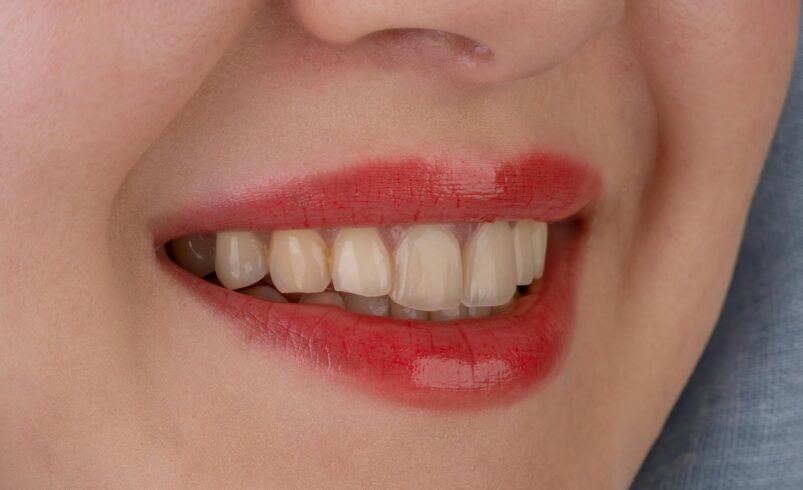Top 5 Reasons to Choose Composite Bonding for Cosmetic Dental Improvements

If you’re thinking about improving your smile, composite bonding is one of the most accessible and effective cosmetic dental treatments available today. Whether it’s to fix a chipped tooth, close a gap, or improve the overall shape and appearance of your teeth, this procedure offers a simple yet transformative solution.
More people in the UK are choosing composite bonding because it’s fast, affordable, and requires little to no drilling. In this article, we’ll explore the top five reasons why composite bonding could be the right choice for your cosmetic dental needs.
1. It’s a Quick and Painless Procedure
One of the biggest reasons people choose composite bonding is how fast and easy the treatment is. Unlike cosmetic dental procedures requiring several visits or time in a dental lab, bonding can usually be completed in a single appointment.
The process involves applying a tooth-coloured resin to the surface of your teeth. The dentist shapes it to match your natural smile, then hardens it using a curing light. There’s no need for anaesthetic unless you’re having a cavity filled at the same time, and there’s no recovery period – you can get back to your day straight after.
This makes composite bonding ideal if you want to fix minor imperfections without the hassle of more invasive treatments.
2. Composite Bonding Is Affordable
Cost is often a key factor when considering cosmetic dental work. Compared to treatments like porcelain veneers or orthodontics, composite bonding is one of the most cost-effective ways to improve the look of your teeth.
It delivers noticeable results at a fraction of the price. Because the materials used are more affordable and the treatment doesn’t involve lab work, it’s a budget-friendly option for many patients looking for an affordable smile makeover.
It’s also a good stepping stone if you’re considering future treatments but want to enhance your smile in the meantime.
3. It Requires Minimal or No Tooth Drilling
Another major benefit of composite bonding is that it’s a minimally invasive dental treatment. In most cases, your dentist won’t need to remove any enamel, which means your natural tooth structure stays intact. This is different from treatments like crowns or veneers, where part of the tooth surface needs to be filed down.
This approach not only makes the treatment reversible, but it also helps preserve the long-term health of your teeth. For nervous patients or those looking to avoid drilling wherever possible, bonding is a reassuring option.
Many people are also choosing composite bonding as a more conservative alternative to veneers, especially for younger patients or those with only minor cosmetic concerns.
4. It Can Fix a Range of Cosmetic Issues
Composite bonding is a versatile solution that can address a wide range of cosmetic dental problems. It’s often used to:
- Repair chipped or cracked teeth
- Close small gaps between teeth
- Lengthen worn-down teeth
- Improve tooth shape and symmetry
- Cover discolouration or stains that whitening can’t fix
Because the material is carefully colour-matched to your natural teeth, the result is seamless and natural-looking. Your dentist can sculpt the bonding material in detail to match the size, shape, and shade of surrounding teeth, improving the harmony of your smile.
If you’ve been feeling self-conscious about a specific tooth or a few minor imperfections, composite bonding may be all you need to feel more confident.
5. Immediate Results and Low Maintenance
One of the main appeals of composite bonding is that the results are instant. You walk into the dentist with a smile you’re not happy with, and you leave with one you are. There’s no need to wait for lab-made restorations or wear temporary covers in the meantime.
The treatment also doesn’t require any special care beyond your normal oral hygiene routine. Brushing twice a day, flossing regularly, and avoiding habits like nail biting or chewing on pens will help keep your bonded teeth looking good.
It’s worth noting that while the composite resin is strong, it’s not as durable as porcelain. The average lifespan of composite bonding is around 4 to 7 years, but with regular dental check-ups and good care, it can last longer.
If damage does occur, the good news is that it’s easy and affordable to repair or touch up.
Is Composite Bonding Right for Everyone?
Composite bonding works best for patients with healthy teeth and gums who want to make small to moderate cosmetic changes. It’s not suitable for major bite corrections or severely misaligned teeth – in those cases, orthodontic treatment or veneers might be more effective.
However, for people who want fast results without complex procedures, it offers a simple and effective solution. It’s also a great option for patients who want to test the waters before committing to more permanent cosmetic work.
What to Expect at Your Appointment
If you’re thinking about booking composite bonding, your dentist will first carry out a consultation to assess your teeth and discuss your goals. They may take photos or scans and help you visualise how your smile will look after the treatment.
On the day, the tooth surface is cleaned and slightly roughened to help the bonding material stick. The resin is then applied, shaped, and cured with a UV light. After final shaping and polishing, the tooth is ready to go. Most appointments last between 30 minutes and an hour per tooth.
There’s no downtime and no need to avoid eating or drinking after the procedure. You’ll be able to enjoy your new smile straight away.
Final Thoughts
Composite bonding is an increasingly popular cosmetic treatment at Zen House Dental– and for good reason. It’s fast, affordable, minimally invasive, and capable of transforming your smile in a single visit. Whether you’re repairing a chip, closing a gap, or simply want your teeth to look a little more even, it’s a treatment well worth considering.
If you’re ready to explore your options for cosmetic dental improvements, speak to your local dentist about composite bonding for a tailored treatment plan.




